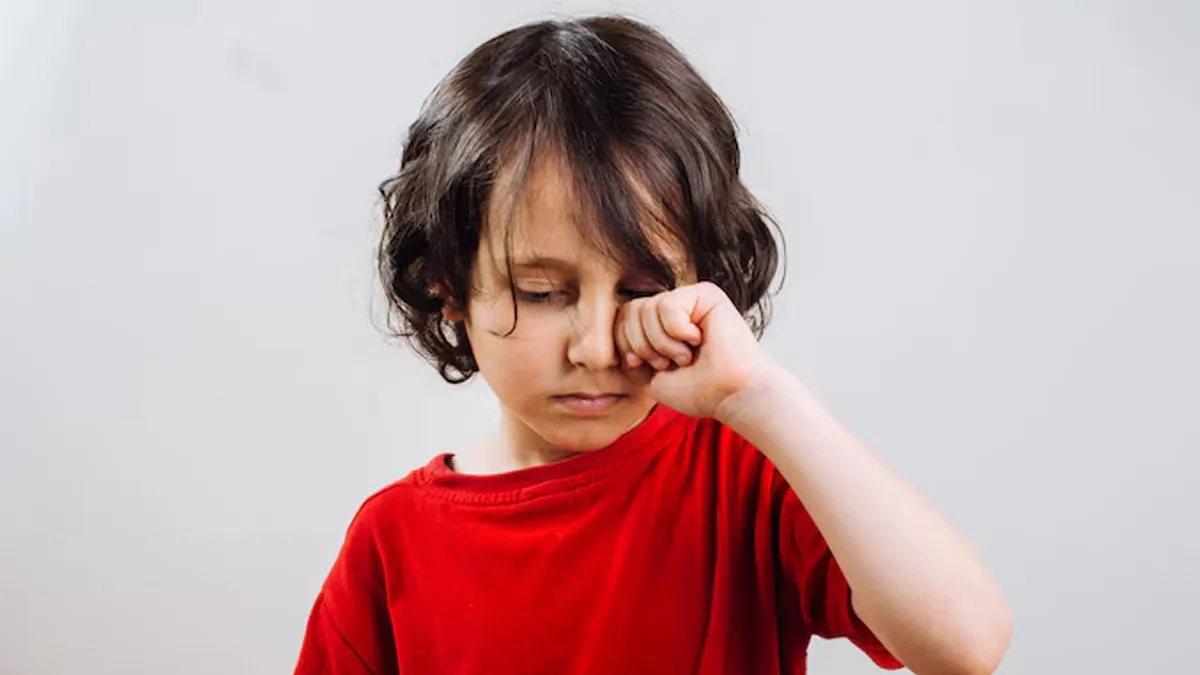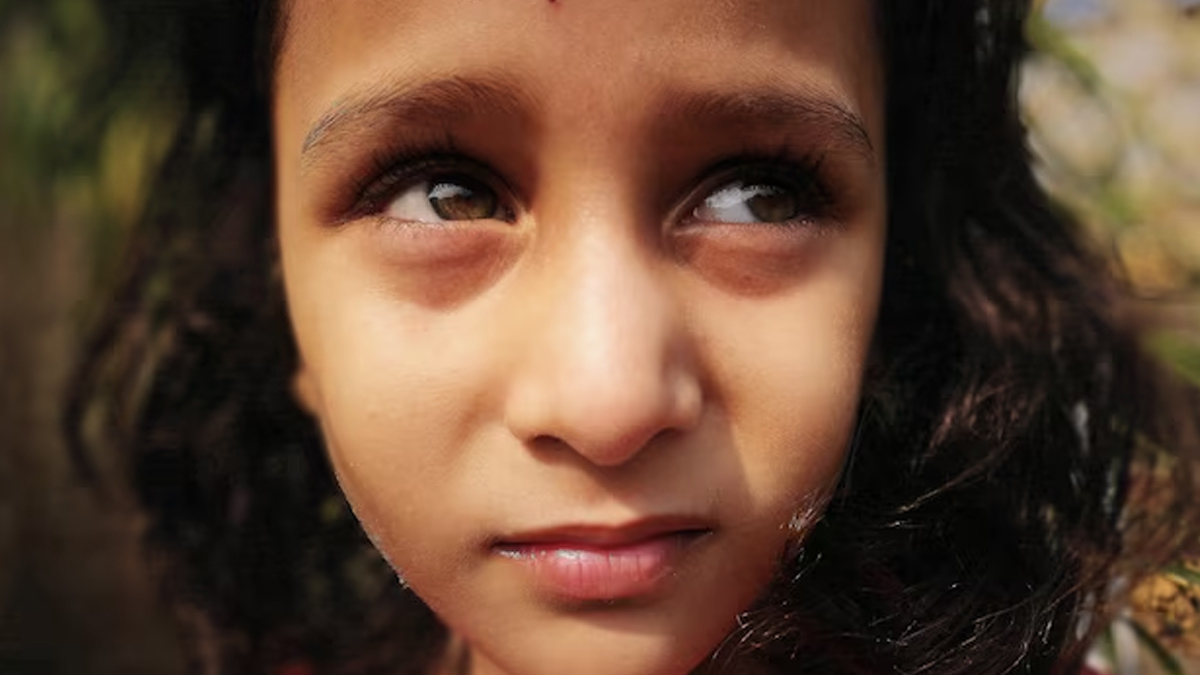
Dark circles, a commonly reported dermatological problem in adults, can also occur in children. It is characterised by discolouration of the skin under the eyes, usually ranging in colours from bluish-purple to brown or black. While they’re commonly linked to ageing, lack of sleep, fatigue, and stress, genetics also play a role. In children, these factors may be similar, but parents should also consider other underlying causes beyond just sleeplessness or tiredness.
Table of Content:-
In an interaction with the OnlyMyHealth team, Dr Bhavuk Dhir, Consultant Dermatologist, PSRI Hospital, Delhi, highlights some of the common causes of dark circles in children and shares remedies to get rid of them.
Also Read: Do Late Nights Really Cause Dark Circles? Find Out Here
What Causes Dark Circles In Children?

Dark circles are often assumed to be caused by lack of sleep. But while poor sleep is a common factor, it is not the only one, says Dr Dhir.
A 2019 study published in the Clinical, Cosmetic and Investigational Dermatology found that dark circles under the eyes are mainly caused by three factors: too much pigmentation, more visible or dilated blood vessels, and thinner skin in the under-eye area. These issues make the area appear darker, especially in people with fair or thin skin.
In children, some of the common causes of dark circles shared by Dr Dhir include:
Genetics
One of the most common non-sleep-related causes of dark circles is heredity or genetics. If parents or other family members have naturally darker pigmentation under the eyes, children are more likely to develop it too. This type of pigmentation can appear very early in life and is usually harmless, though it may not be entirely preventable.
Thin under-eye skin
According to Dr Dhir, when a child has a naturally fair or thin complexion, the blood vessels under the eyes become more visible, giving the appearance of dark circles. This thin skin can make even mild puffiness or dilation of blood vessels stand out more clearly. As a result, the area under the eyes may look bluish or purple, giving the impression of tiredness even when the child is well-rested.
Nasal congestion or allergies

Blocked nasal passages, whether from allergies, sinus infections, or even a common cold, can lead to what’s known as 'allergic shiners'. When a child’s nose is congested, blood flow increases around the sinuses, and the veins under the eyes can become engorged. This gives the area a darker, shadowy appearance.
Nutritional deficiencies
In some cases, a lack of essential nutrients can lead to poor oxygenation of blood and may contribute to a tired appearance or dark circles. Dr Dhir notes, "Nutritional deficiencies, particularly in iron, vitamin B12, and vitamin K, may also lead to under-eye darkening. If a child is a picky eater or has poor dietary habits, it can affect skin tone and contribute to dark circles."
Eye rubbing and skin irritation
"Frequent rubbing of itchy eyes also contributes to the problem," says Dr Dhir. Children with itchy eyes from allergies or irritation may frequently rub their eyes. This can lead to inflammation and hyperpigmentation around the delicate under-eye skin, causing the area to darken over time.
Also Read: Using Green Tea Ice Cubes For Under-Eye Puffiness: A Step-by-Step Guide
When Should Parents Be Concerned?

Parents should seek medical advice if the dark circles are accompanied by other symptoms like fatigue, poor appetite, delayed growth, or behavioural changes, according to Dr Dhir.
He adds, “Sudden onset of dark circles or those that worsen over time may also require evaluation. If the child seems healthy otherwise and is active, dark circles are usually harmless, but persistent or worsening cases should not be ignored.”
Treatments And Home Remedies
For children, Dr Dhir recommends safe home remedies like ensuring proper sleep (8–10 hours), offering a balanced diet rich in fruits, vegetables, and iron-rich foods, and addressing any allergies with medical guidance. Additionally, applying a cold compress or cucumber slices over the eyes for a few minutes may reduce puffiness.
However, strict avoidance of adult under-eye products without consulting a paediatrician or dermatologist is essential, as children’s skin is more sensitive and can react adversely to strong ingredients.
Conclusion
Dark circles under a child’s eyes can be worrying, but they’re not always a sign of something serious. In many cases, they’re simply due to genetics, thinner skin, or a bit of tiredness. That said, it’s still important to keep an eye on your child’s overall well-being. A little extra rest, a healthier diet, or treating nasal allergies can often help. But if the circles suddenly appear or come with other changes, like fatigue or loss of appetite, it’s best to check in with a doctor.
How we keep this article up to date:
We work with experts and keep a close eye on the latest in health and wellness. Whenever there is a new research or helpful information, we update our articles with accurate and useful advice.
Current Version